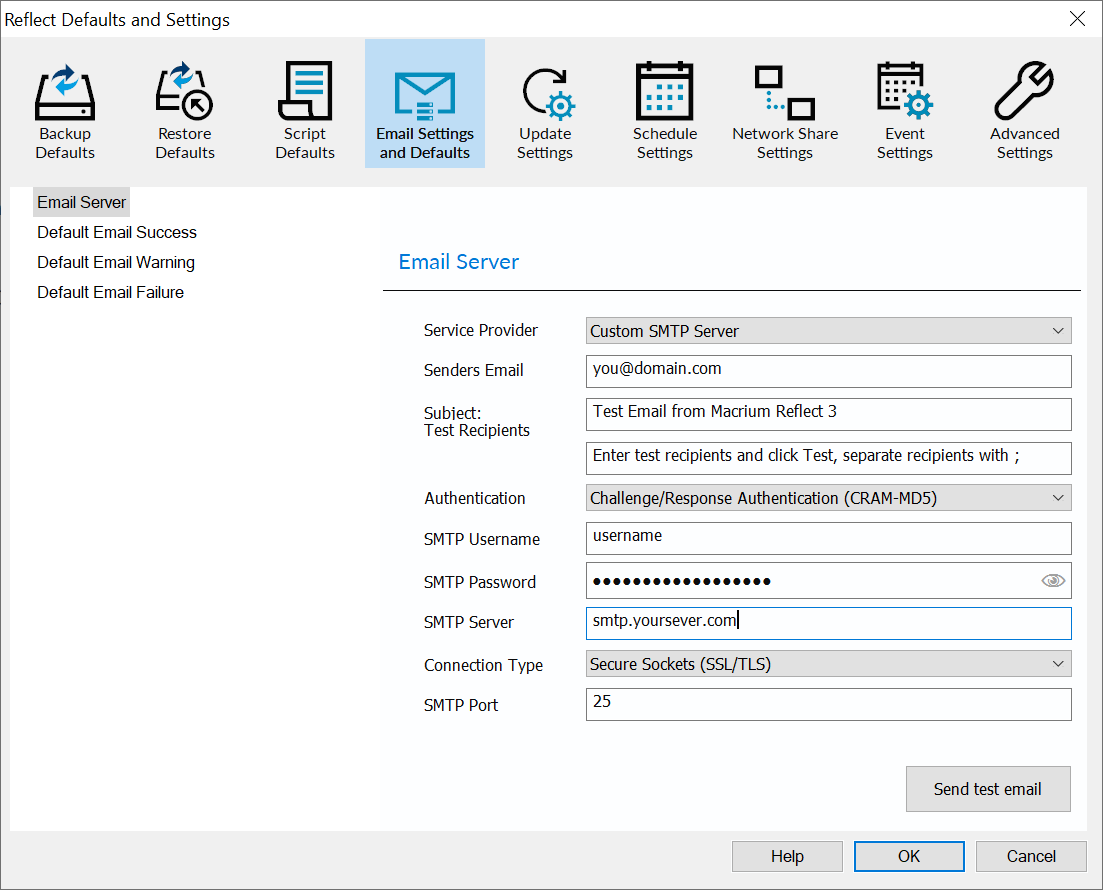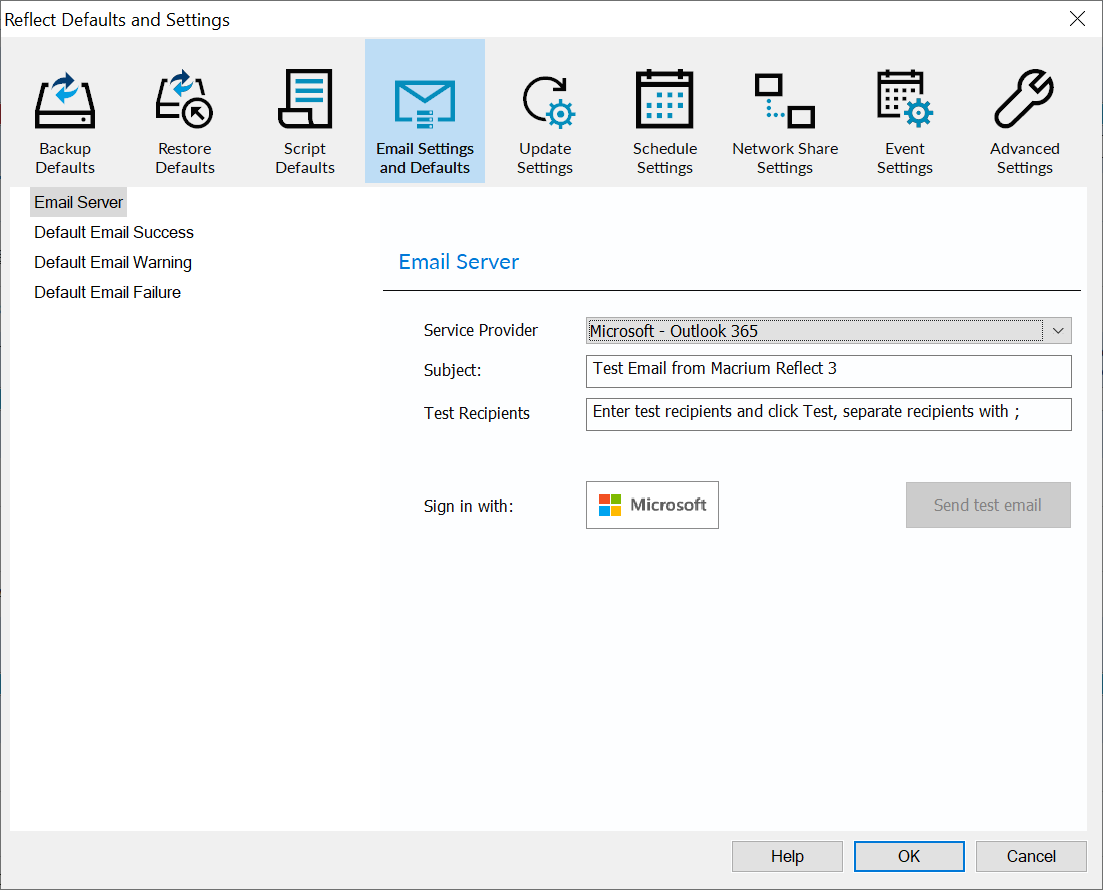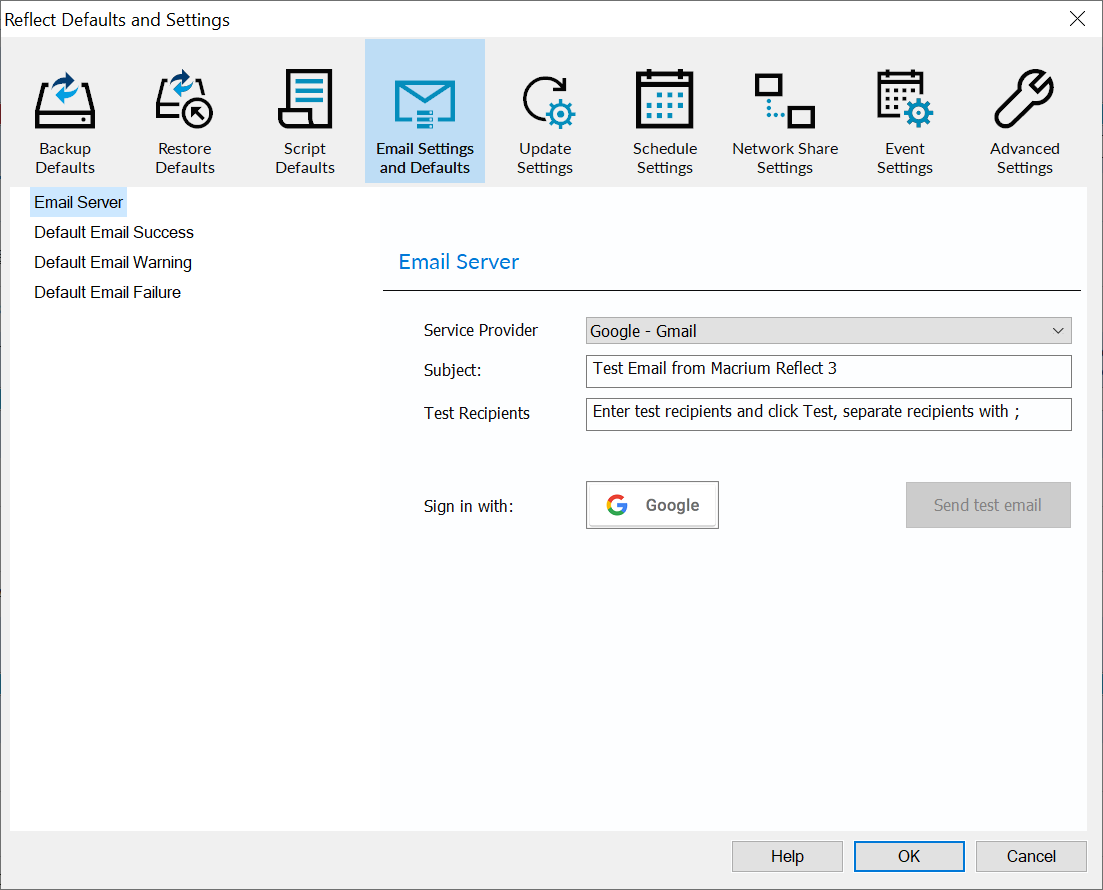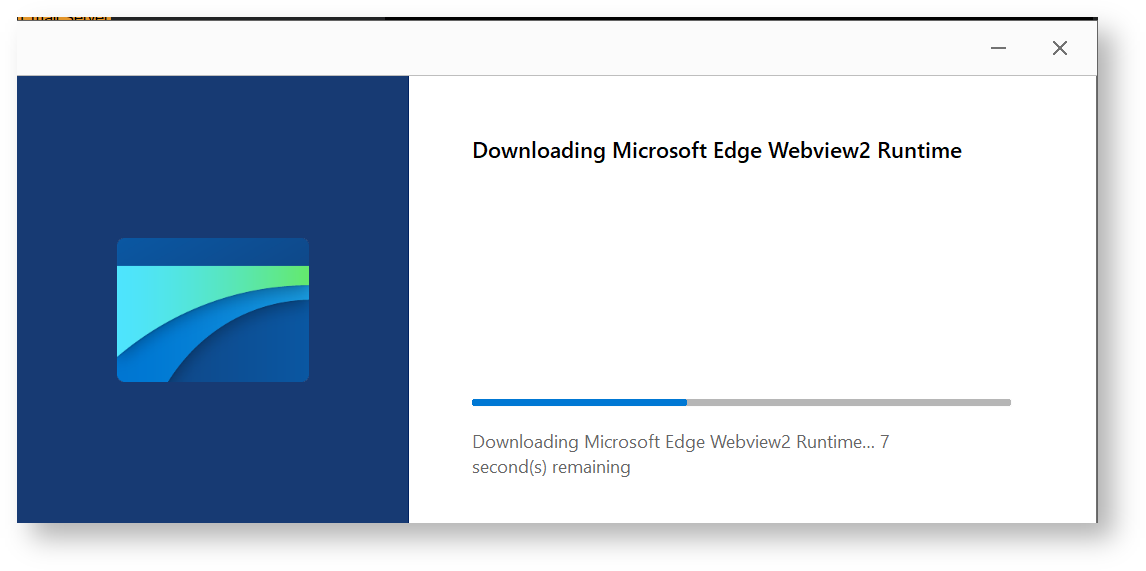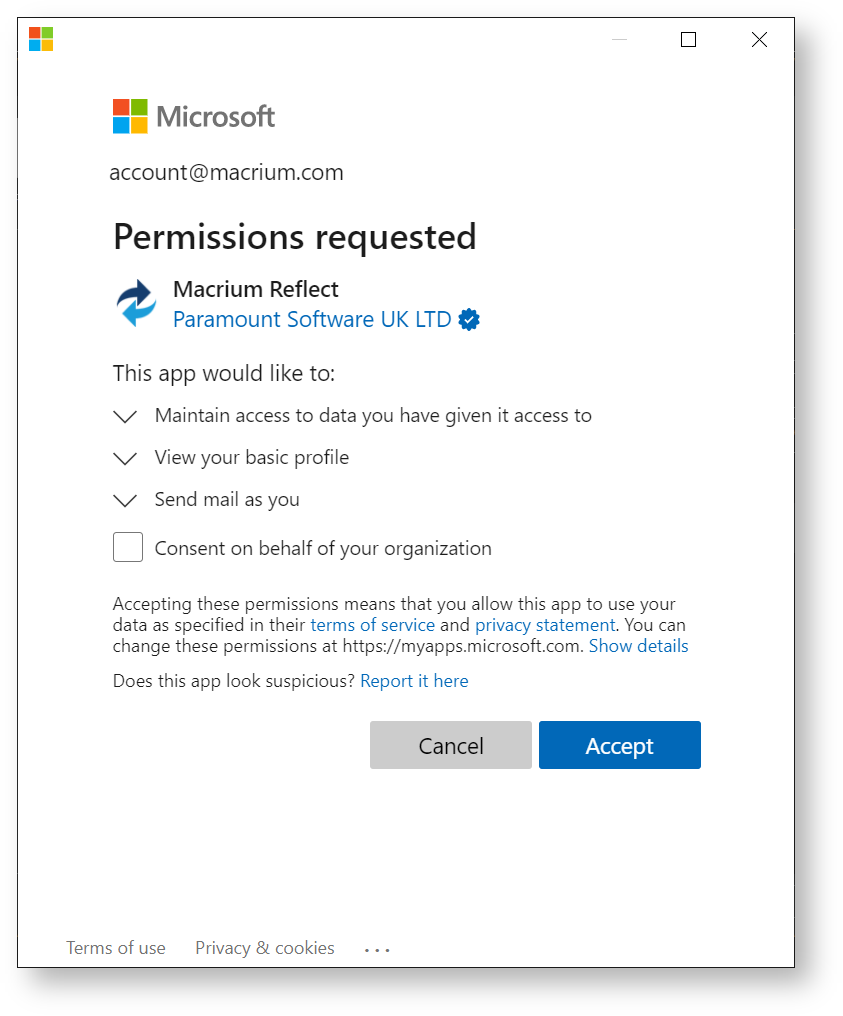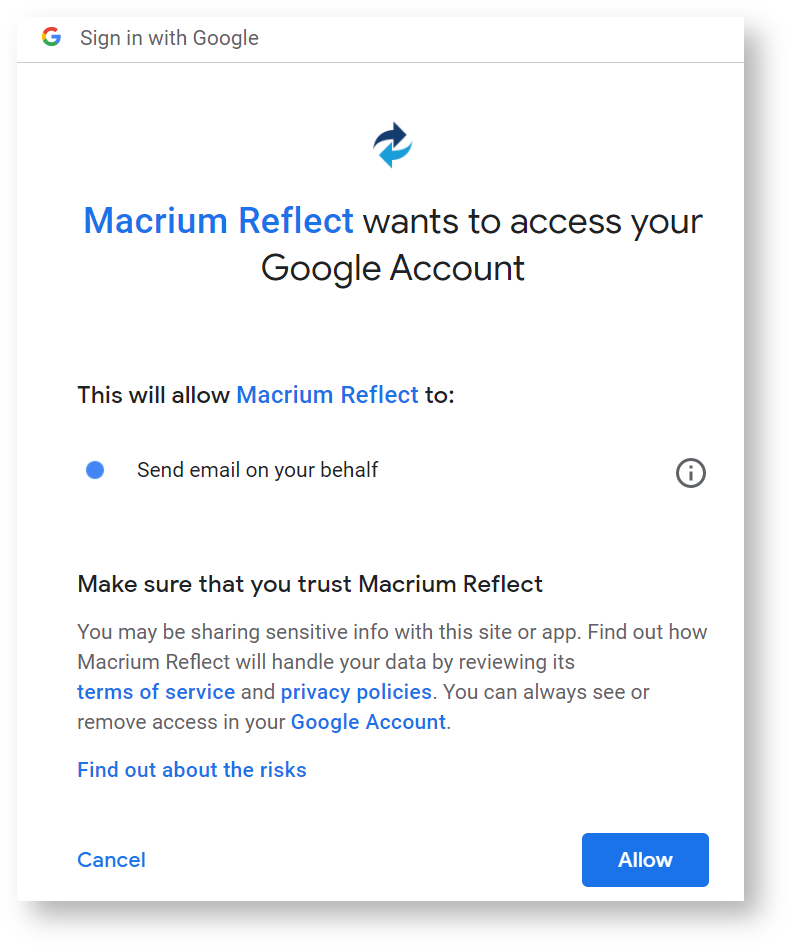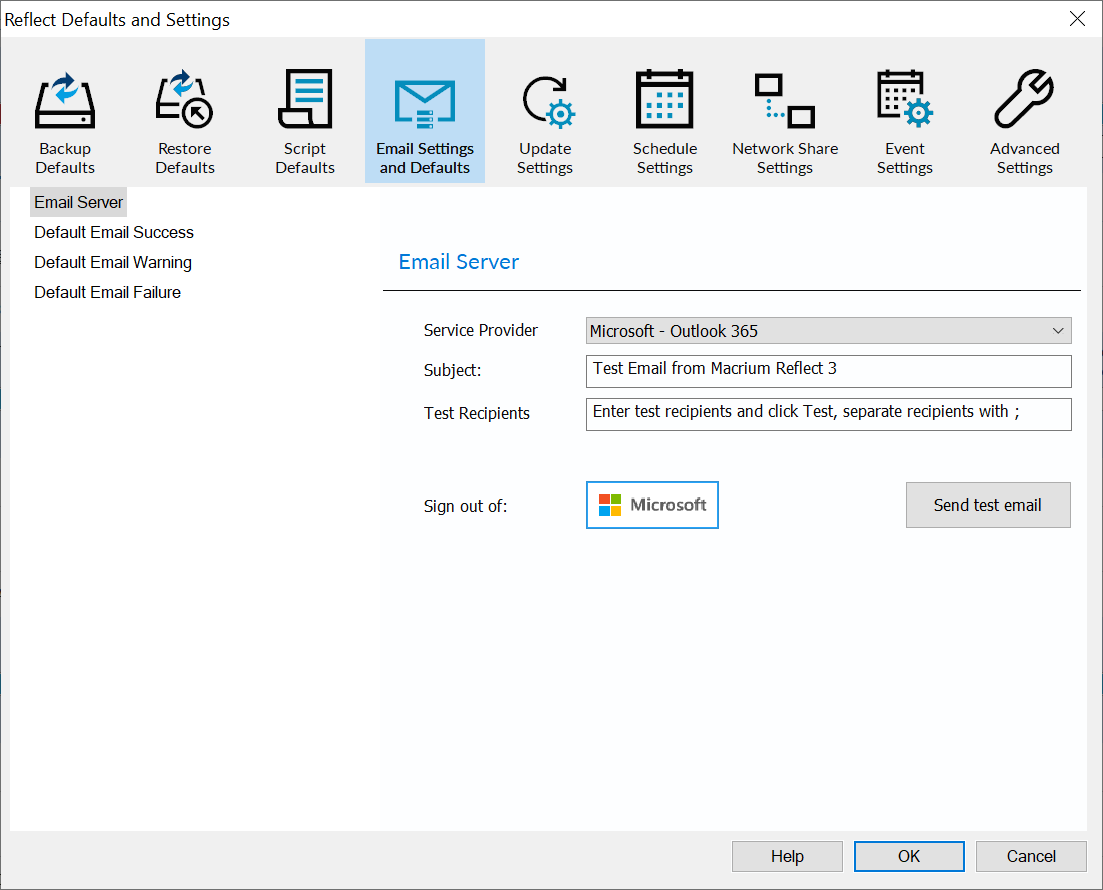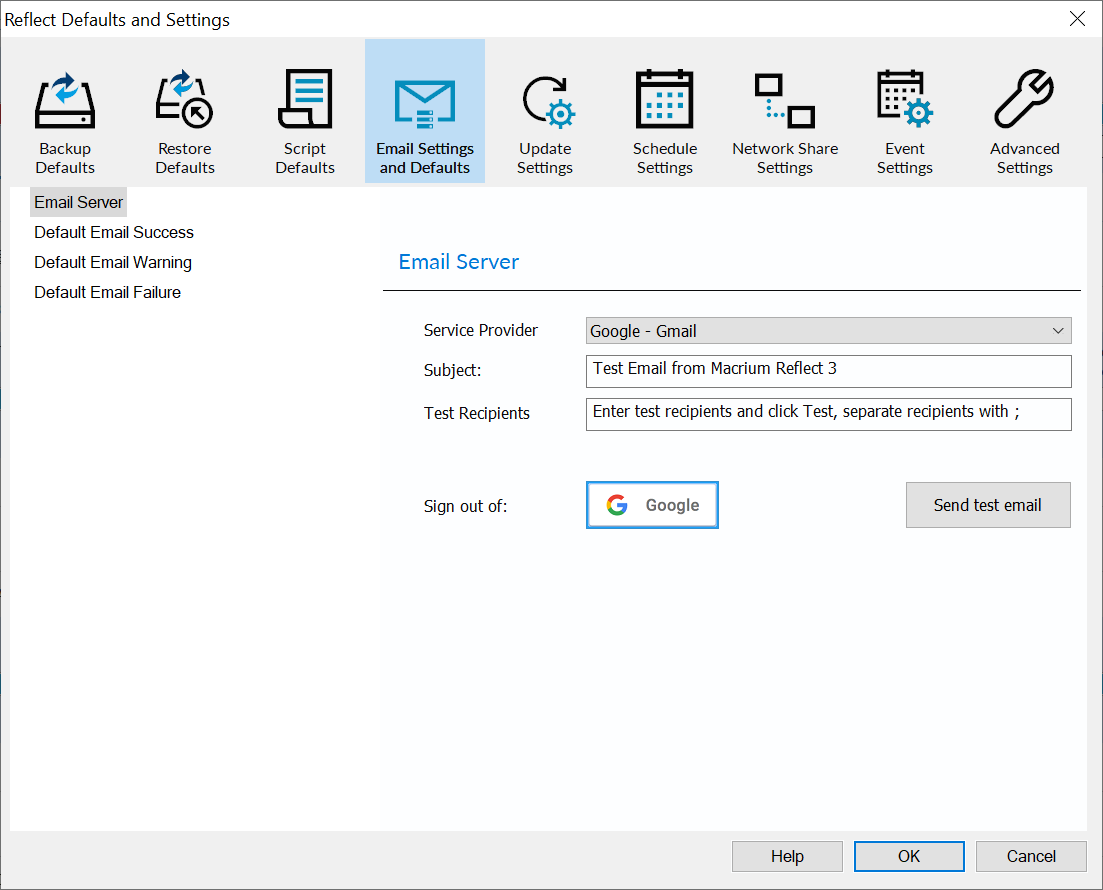Emails can be sent for backup completion notifications, software update notifications and for add-hoc emails of logs and support contact.
You can choose to manually configure your Email SMTP server, or use your Google or Microsoft account to send Emails using Gmail or Outlook 365
Custom SMTP Server
| Option | Description |
|---|---|
| Senders Email | The Email address of the sender. This is normally required to be the same domain as your ISP. |
| Authentication | Authentication options are set by your email provider/server. Note: If you do not know your authentication settings, try Auto Detect. |
| SMTP Username | The user name associated with your e-mail account. This is essentially your email address. |
| SMTP Password | This is the password for your e-mail Server. |
| SMTP Server | This is the outgoing / SMTP Server setting or IP address. |
| Connection Type | Contact your ISP for the correct setting Note: These settings can be found from your email provider. |
| SMTP Port | This is associated with Connection Type and is the port number that the SMTP server is listening on. Note: These settings can be found from your email provider. |
| Test Recipients | This option is used to test the configured settings; enter your e-mail address in that field and click Test to send a test message to your email. |
Google - Gmail and Microsoft Outlook 365
Microsoft - Outlook 365
Google - Gmail
The first time you sign in you will be prompted for a one time download and install of the WebView2 distribution installer.
This is a lightweight MS Edge Chromium web browser that provides a controlled experience for the Macrium Reflect implementation of the OAuth 2.0 login.
Click 'Yes' to install or 'No' to continue with your web browser.
If you click 'No' you will be taken out of Macrium Reflect to continue in your default web browser.
Once WebView2 installation is complete a web sign in dialog opens. Follow the normal sign in procedure for either Microsoft or Google, completing two factor authorization as necessary.
You'll be prompted to accept permissions to allow Macrium Reflect to send emails on your behalf.
For Microsoft Click 'Accept'
For Google click 'Allow'
That's it! You're now setup to use Gmail or Microsoft as the service provider to send your backup completion emails.
Default Email Success, Warning and Failure
| Option | Description |
|---|---|
| Attach log file | Attach the HTML backup log file. |
| Attach VSS log file | Attach the VSS log if VSS was involved in the backup. |
| Include Cancellations | Email Failure setting. Also send an Email for cancelled backups. |
| Recipient List | Separate multiple Email addresses with ';' [email protected]; [email protected] |
| Subject Content | Enter your own text in these fields to identify the backup job. |
Email Parameters
Run time parameters enable dynamic information to be included in email subjects and content at run time.
In the subject or content simply type '{' or press the '{' button at the end of the edit field:
The selected parameter from the pop-up menu will be inserted into the email subject/content at the edit position.
All parameters are evaluated at run time.
| Parameter | Description |
|---|---|
| {REFLECTVER} | Macrium Reflect major minor and build number (9.9.9999) |
| {BACKUPTYPE} | Full, Diff or Inc |
| {COMPRESSION} | None, Med or High |
| {AES} | Clear, None, 128, 192 or 256 Where 'Clear' is no password and 'None' is password with no AES |
| {WINVER} | Windows major minor and build number (9.9.99999) |
| {PCNAME} | The PC NetBIOS name |
| {USERNAME} | The Windows account name running Macrium Reflect |
| {USERDOMAIN} | The Windows account domain running Macrium Reflect |
| {ISODATE} | Current backup formatted date and time (YYYY-MM-DDTHH.MM.SS) |
| {YYYY} | Year with century, as a number |
| {YY} | Year without century, as a number (00 - 99) |
| {MM} | Month as a number (01 - 12) |
| {MNAME} | Full month name |
| {MNAMESHORT} | Abbreviated month name |
| {WEEKNUMM} | Week number (00 - 53). The 1st Monday is the 1st day of week 1 |
| {WEEKNUMS} | Week number (00 - 53). The 1st Sunday is the 1st day of week 1 |
| {DD} | Day of month as a number (01 - 31) |
| {WDNAME} | Full weekday name |
| {WDNAMESHORT} | Abbreviated weekday name |
| {WDNUMMON} | Weekday as a number (1 - 7; Monday is 1) |
| {WDNUMSUN} | Weekday as a number (0 - 6; Sunday is 0) |
| {HH} | Hour in 24-hour format (00 - 23) |
| {HH12} | Hour in 12-hour format (01 - 12) |
| {AMPM} | A.M./P.M. indicator for 12-hour clock |
| {MIN} | Minute as a number (00 - 59) |
| {SS} | Second as a number (00 - 59) |
| {BACKUPFILENAME} | Name of the backup file |
| {BACKUPFILEPATH} | Full path to the backup file |
| {BACKUPDEFINITIONNAME} | Name of the definition file used for the backup |
| {BACKUPDEFINITIONPATH} | Full path to the definition file |
| {BACKUPCOMMENT} | The comment in the backup |
| {BACKUPSTATUS} | The backup completion status - Success, Warning or Failure |

